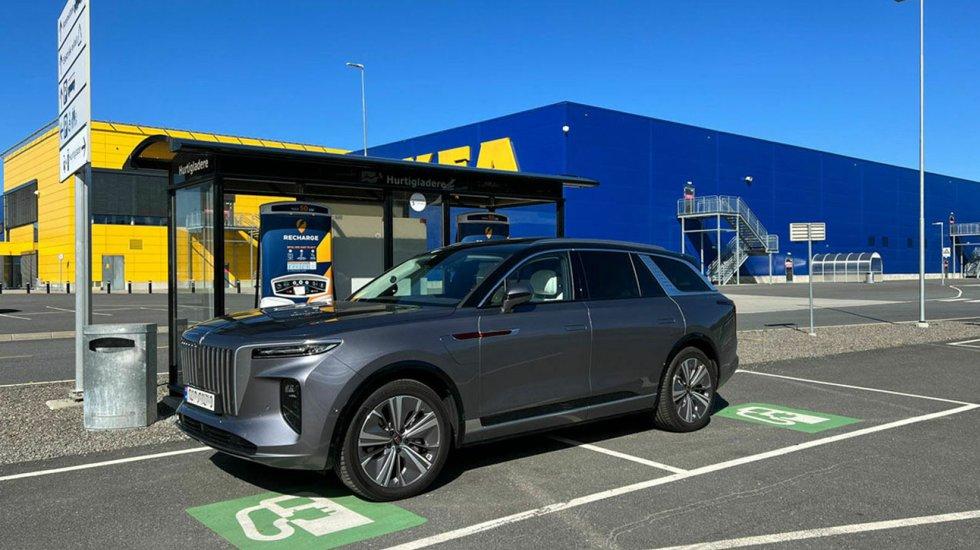Rising electricity prices have made it more expensive to charge the electric car at home. Prices for fast charging and flash have also gone up a lot this fall. This means that it is extremely important to be aware of how you are loading your car.
At most electric car charging points, you will find two types of charging. One is fast charging, chargers that provide an output of 50 kilowatts (kW). The other is lightning charging, which provides a power of 150 kW or higher. With the vast majority of charging service providers, you pay more per kilowatt hour when using a Lightning charger than it costs for fast charging.
17 cars under 50 kW
– Since it is the car that determines the charging rate at which it charges, it is advisable to choose the right charger for your car, says Nils Sødal, senior communications consultant at NAF.
According to data from the Road Traffic Information Council (OFV), there are 17 electric car models on Norwegian roads that can charge with up to 50 kW.
– If you have one of these cars, it is smart to choose the 50 kW charger at the charging station. So you pay less for the kilowatt hour and it’s as quick to charge as if you chose to charge on a Lightning charger, advises Sødal.
This is good news for charging for anyone who has an electric car
Here the charger shows how much energy it provides. By following this, you get a good picture of how effective the charging session is.
—-
Financial gain
You won’t get electricity from the battery any faster with a Lightning charger, if your car can only receive 50kW. Popular electric cars such as the Mazda MX30, Volkswagen e-Golf, BMW i3 and Kia Soul Electric are examples of cars that can load with up to 50kW.
– It is important that you are aware of how much power your car can charge. You get a financial advantage from choosing the right one, while at the same time not taking up space on the lightning charger, says Sødal.
11 electric car models can charge between 50 and 100 kW. This applies to several popular cars such as Hyundai Kona and Kia e-Niro. You will also get the best price for these cars if you charge with 50 kW.
Two things are important to understand when you want to load fast
 –
–
The Kia Niro has been a popular electric car for many years. If you have this, there is no point in using a Lightning charger.
—-
The speed varies
– Charging these cars isn’t much slower with a fast charger than with a Lightning charger. That’s why it’s wise to use the cheapest charging option at the charging station, Sødal says.
From the moment you start charging until it finishes, the amount of electricity the electric car can receive will vary. Even if it is said that your electric car can charge with 100 kW, that does not mean that it does so for as long as it is charging.
– Some cars charge more evenly than others. Therefore, it is worth investigating how much energy your electric car receives via a battery charge. NAF has tested the vast majority of electric cars sold in Norway and has carried out charging tests. They give an indication of what to expect in summer and winter, says the NAF advisor.
If you find that your electric car mostly charges around 50 kW for most of the charging time, even though the maximum charging power should be 100 kW, you can just as easily choose a quick charger at the charging station.
Many can rejoice: the state pays most of the bill
Car models and maximum charging power:
–
- Seat Mii electric: 40 kW
- Skoda Citigo-e: 40 kW
- Volkswagen e-Golf: 40 kW
- Volkswagen e-Up: 40 kW
- Honda e: 46 kW
- BMW i3: 49 kW
- Hyundai IONIQ (2020): 50 kW
- Kia e-Soul: 50 kW
- Kia Soul Electric: 50 kW
- Lexus UX 300e: 50 kW
- Mazda MX-30: 50 kW
- Mini Cooper SE: 50 kW
- Nissan Leaf 39kWt: 50kW
- Nissan Leaf (earlier version): 50 kW
- Opel Ampera-e: 50 kW
- Renault Zoe: 50 kW
- XPeng G3: 50 kW
- Hyundai IONIQ (2016-2019): 70 kW
- Maxus Euniq5: 70 kW
- Maxus Euniq6: 70 kW
- Hyundai Kona electric: 77 kW
- Kia e-Soul: 77 kW
- Kia and Niro: 80 kW
- Fiat 500: 85kW
- MG5: 87 kW
- XPeng P7: 90 kW
- MG Marvel R: 92 kW
- MG ZS EV: 92 kW
Data are taken from OFV and NAF
—
The article was first published on Broom no.
–


